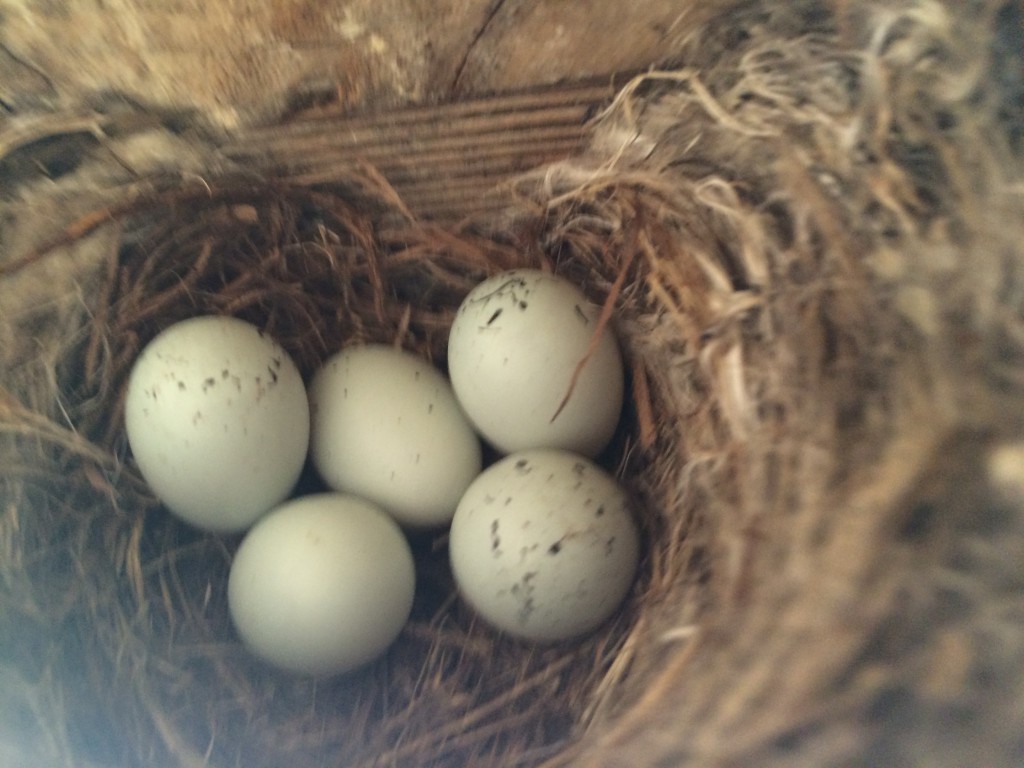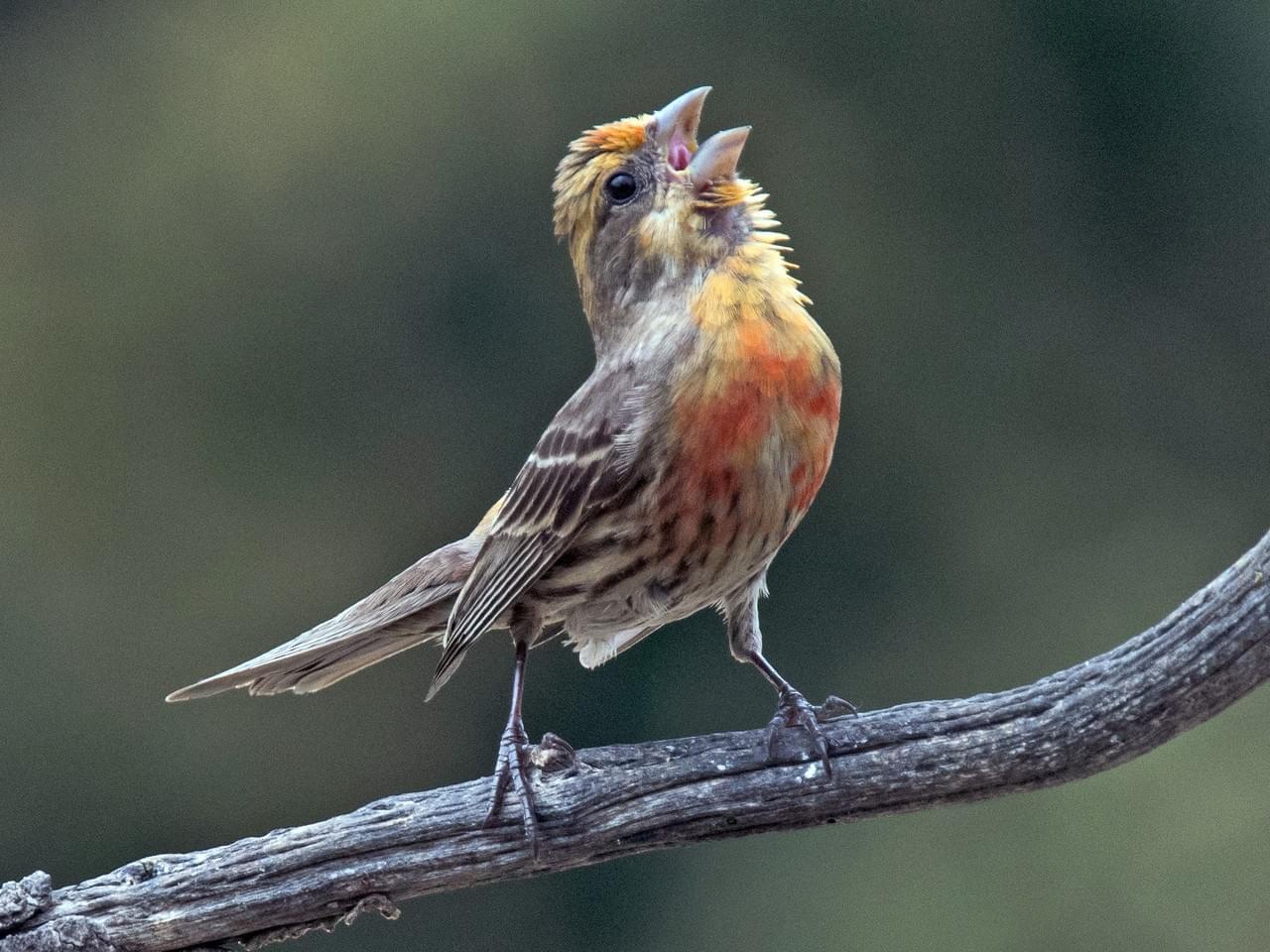Table Of Content

The nest typically comprises of soft materials, including twigs, string, wool, feathers, and leaves. House Finches nest in a variety of deciduous and coniferous trees as well as on cactus and rock ledges. They also nest in or on buildings, using sites like vents, ledges, street lamps, ivy, and hanging planters. Occasionally House Finches use the abandoned nests of other birds.
What Do House Finches Look Like?
The male usually joins the female in feeding and caring for the chicks. The parents do not start incubating the eggs until the last egg is laid. They continue to feed the chicks even after the birds leave the nest. The oldest house finches lived up to eleven years seven months in the wild but most live only a few years.
Birds 6 through 10
Adult males are rosy red around the face and upper breast, with a streaks down the belly and on the flanks. We've made this site to make it easier to learn everything you need to know about your favorite songbird species. Our mission is to educate people about songbirds and provide the best resources to help them identify them and contribute to conservation efforts.

Ideal Birdhouses or Aviary Environments for House Finches
They prefer edge habitat and are absent from dense coniferous forests. The House Finches diet mainly consists of plant materials like buds, fruits, and seeds. Some foods they’ll consume in the wild are knotweed, mustard seeds, thistle, poison oak, mulberry, cactus, and other plant species.
House finch related species in this family
Art Lander's Outdoors: The house finch is found statewide, but most abundant in Central Kentucky - NKyTribune - User-generated content
Art Lander's Outdoors: The house finch is found statewide, but most abundant in Central Kentucky - NKyTribune.
Posted: Fri, 05 Jan 2024 08:00:00 GMT [source]
On average, a pair will produce two successful broods in one nesting season. House finches can lay up to six clutches, but usually, no more than three make it to the fledging stage. For example, house finches nesting in Arizona always utilizes fresh creosote twigs with the leaves still on. Fresh or green plant materials help prevent mites, which is why finches will add more creosote to their nest when mite season is in full swing. Their music is a high, throaty warble with a rising buzz on the finish, whereas the most common name is a pointy, raspy “cheeeep” that may be made whereas perched or in flight. With our knowledge and appreciation combined, we might just be able to provide safe havens for future generations to learn and admire from miles away.
Finches: Mating Habits, Nesting & Eggs
The most important site characteristics are protection from above and a solid base to build on. Both sexes have light brown plumage, or feathers, with white and dark brown mottling. However, males have red or rose-colored accents on their heads, necks, and chests. All three species share the taxonomic genus Haemorhous, and the little birds are collectively referred to as American Rosefinches. These little birds live throughout a large portion of North America. It could also indicate that the female is more physically fit and therefore is able to find food and nest successfully.
Their breeding population is estimated to be 40 million according to the North American Breeding Bird Survey. However this species is only recently arriving in the Eastern United States after being accidentally released from illegal pet shops in New York in the 1940s. From there they spread to the Great Plains where they met their western cousins.
Many people think they are seeing a Red-headed Sparrow Bird. Each male has its own unique song, although there can be regional variations as well. The song is often described as cheerful and musical, with a mix of trills, whistles, and short phrases. Once a crackdown on this illegal trade went into effect, shop owners were quick to release the birds into the wild.
Feeding Habits - What is the Best Seed for wild House Finches to Eat

Many finches have notched tails but the house finch has only a shallow notch in its tail. The male house finch typically has a red head, breast, and rump, but does not have red coloring on its brown back or wings. Female house finches have blurrier streaks and grayer undersides. The color varies among males, from pale yellow, to orange with bright red (All About Birds). House Finches are not usually aggressive unless put in a confined space with other birds.
All three species are streaked, and the males of all three have red plumage. The House Finch, the most common and widespread of the three, typically has a red head, breast, and rump, but does not have red coloring on its brown back or wings. Female House Finches have blurrier streaks and grayer undersides than the other two species.
But regurgitating food is a fast way to deliver nutrients to very young birds. Once hatched, baby House Finch broods typically leave their nest in days. While their diet consists primarily of seeds, fruit, and nuts, on rare occasions, they will also eat insects in the summertime. Some flocks of finches travel south to places like North Carolina, while others travel as far down as Mexico. On the other hand, Male Purple Finches have a more subtle and understated red tone with a white underbelly and no streaks of brown. The female House Finch is a little more tricky to identify, as they look more like a house sparrow with a few key differences.
The eggs are a pale bluish-green with few black spots and a clean, considerably shiny floor. This strategy will increase the probability that consultant numbers of each sex will survive. Each clutch of eggs can have between 2-7 eggs, with 4-5 being the average. The incubation period lasts about days, and the nestling period, where baby house finches stay in the nest, lasts about days. However, the male finch feeds the fledglings even after they leave the nest. The baby songbirds follow the dad to food sources, such as backyard bird feeders and millet, and wait as the male bird regurgitates food into their mouths.






















